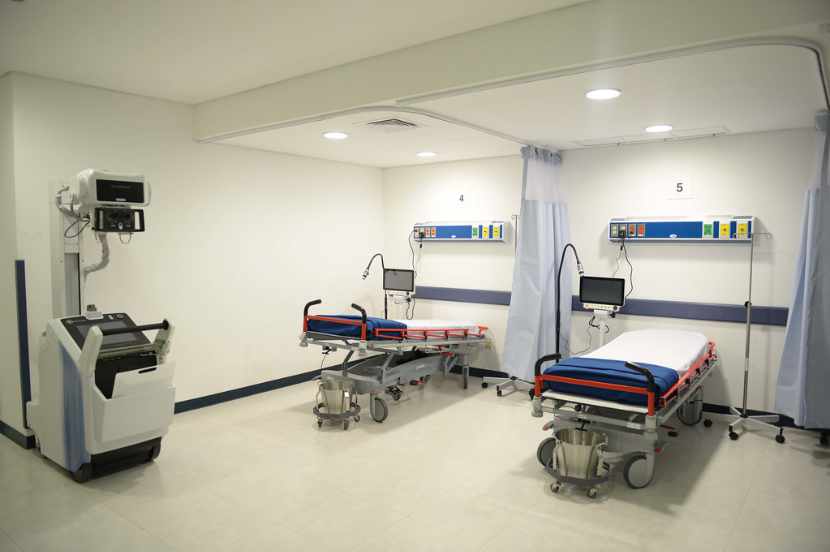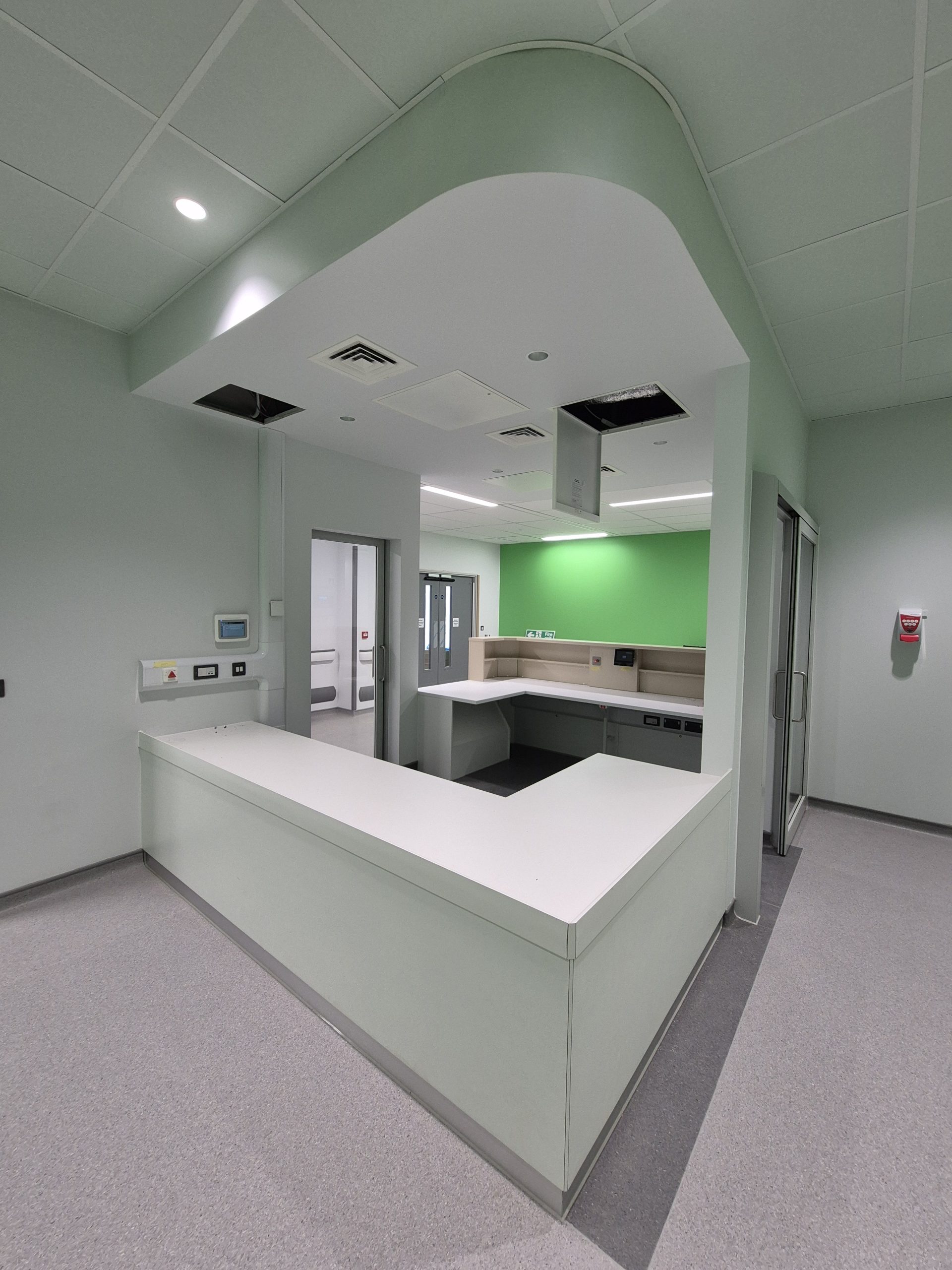Inside the main entrance of a busy NHS hospital is the reception desk. It stands…

The importance of infection control in hospital furniture
The risk of contracting infections is an extremely valid and significant concern not only for patients and visitors to hospitals, but for nurses, surgeons and all other hospital staff too. We all have a responsibility to fully uphold infection control and cleanliness in the clinical environment. Procedures such as excellent hand hygiene through the use of alcohol to disinfect and deep cleaning throughout hospitals are helping us to challenge the risks of infection, but bacteria and germs on hospital furniture continue to pose a huge threat to our health and wellbeing. So how can we tackle the transmission and spread of infection to humans from healthcare furniture? There are two major criteria to consider when thinking about infection control in hospital furniture.
Furniture materials
Specific materials like Velstone, laminate or Corian are ideal. Not only do they provide a sterile surface, are non-porous and easily wiped clean, but they are compliant with industry standards for furniture in a healthcare environment – specifically, Healthcare Technical Memorandum (HTM) 63 and 71. They are also stain resistant, so any stains or scratch marks can be removed without fuss. They are also very durable, and consequently difficult to damage or tear. An additional benefit is their cost – should they get damaged, Velstone and Corian can be repaired at an affordable price.
Materials such as wood and metal should be avoided in healthcare furniture. They are porous and susceptible to marks and scratches, which could then be damaged further by cleaning agents.
The design of the furniture
Every bit as important as the materials is the design of the hospital furniture. Removable seat cushions ensure that seats soiled with bodily fluids, drinks beverages or food can easily be changed and cleaned in correspondence with current industry regulations, while furniture with sloping tops prevents dust from gathering on surfaces. Seamless joints on healthcare furniture, in line with the HTM 63 specification, are paramount in stopping dirt from accumulating.
Another significant design property is a smooth surface. Smooth surfaces are easy to wipe clean and subsequently less likely to provide a breeding ground for harmful pathogens such as MRSA and Clostridium difficile.
Infection control and healthcare furniture – where to find out more
Read more and download brochures for our HTM 63 and HTM 71 compliant furniture ranges.
Read a short case study about the £300k fitted furniture contract we have recently completed for Wexham Park Hospital’s brand new emergency department, including producing formed stainless steel worktops.
If you’re specifying health centre furniture or if you’d like to discuss a healthcare or hospital project, please get in touch.
As one of the UK’s leading manufacturers of fitted furniture for hospitals and healthcare facilities, we can design, manufacture and install furniture to meet your individual project requirements. Our Healthcare furniture range is specified for all types of hospital refurbishment and new development projects, from NHS Trust premises to private hospitals. All our furniture is manufactured at our factory in Broadstairs, Kent, here in the UK.
Image: Inauguración del Hospital de Traumatología y Ortopedia “Doctor y General Rafael Moreno Valle” by Presidencia de la República Mexicana licensed under Creative Commons 4.0








